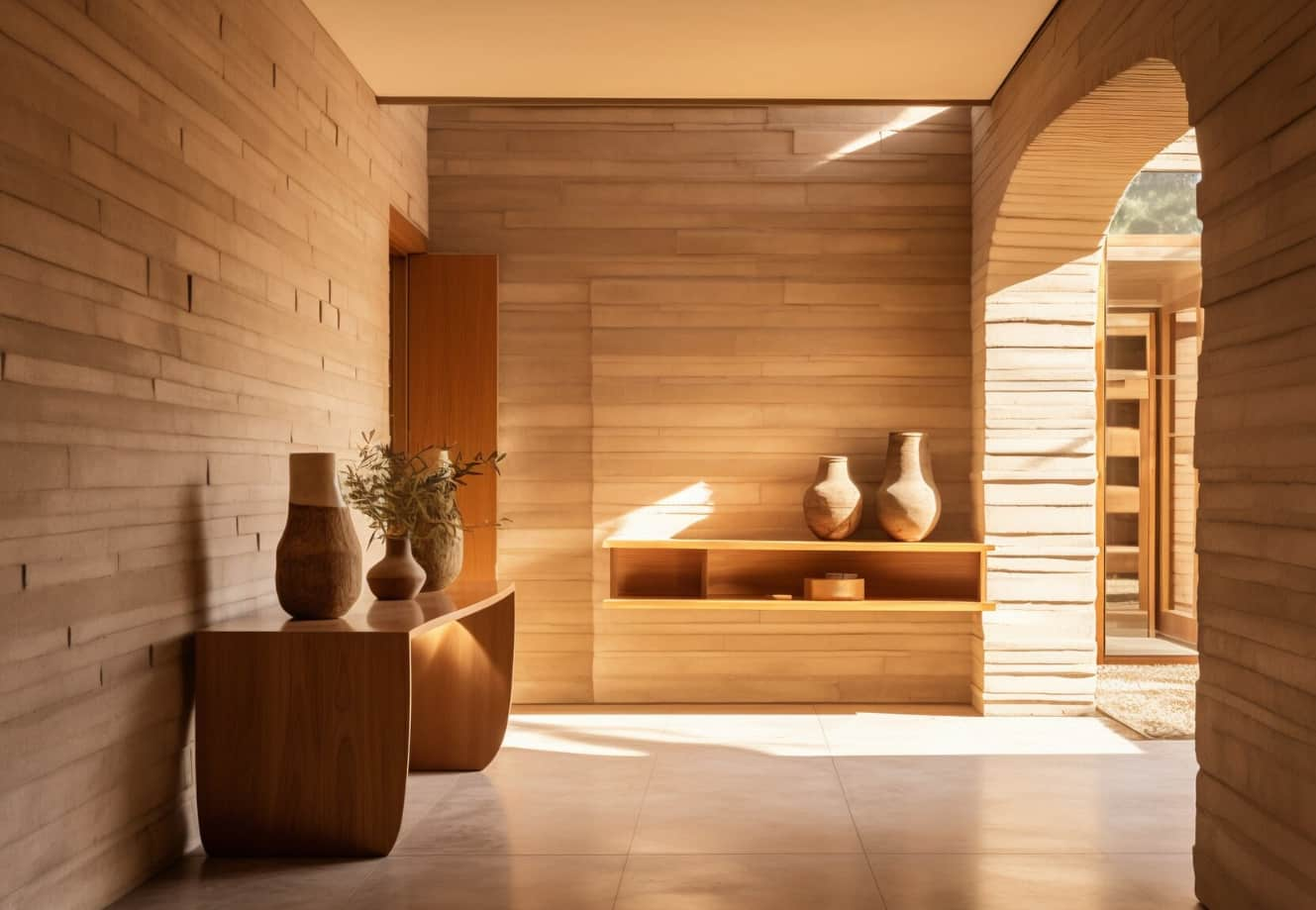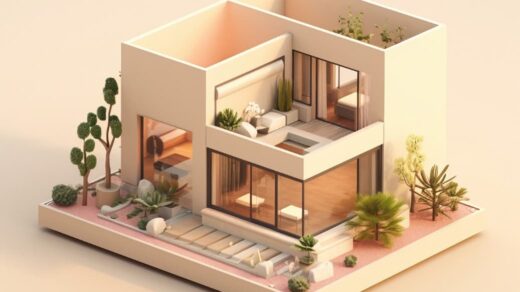Timber is a key material in building and making things. It comes from trees that are cut down and turned into usable wood.
People have been using timber for a very long time to build homes, make furniture, and create many other useful items.
Timber is special because it’s:
- Strong
- Easy to work with
- Good-looking
- Can last a long time if taken care of
In this article, we’ll learn about different kinds of timber, where they come from, and how people use them.
Types of Timber and Their Application

We’ll also talk about why some types of timber are better for certain jobs than others.
Classification of Timber
There are four main ways to group timber:
1. Sapwood
Sapwood is the outer part of a tree trunk. It’s usually lighter in color than the inner wood. Sapwood does important jobs for the tree:
- It moves water and food inside the tree
- It helps the tree not lose too much water
- It protects against bugs and other tiny creatures that might harm the tree
When sapwood dries out, it gets sticky. This makes it hard to remove without hurting the wood.
2. Heartwood
Heartwood is found in the middle of a tree trunk. It’s darker than sapwood. Some key things about Heartwood:
- It’s made of dead tree cells
- Water doesn’t affect it much
- It doesn’t float in water
- People use it to build things and make furniture
- It’s strong but not too heavy
3. Softwood
Softwood comes from a special kind of tree called conifers. These are trees like pine, spruce, and fir. Softwood is:
- Not as hard as some other woods
- Often used in building things
- Usually less expensive than hardwood
4. Hardwood
Hardwood comes from trees that lose their leaves in winter. Some examples are oak, maple, and ash. Hardwood is:
- Very strong and heavy
- More expensive than softwood
- Great for making furniture, floors, and cabinets
People often dry hardwood in special ovens. This helps the wood keep its shape and not warp or crack when it gets wet.
Types of Timber Based on Wood Species
Now let’s look at some common types of wood used for timber:
1. Bamboo
Bamboo isn’t a tree, but a type of grass. It’s used like timber because:
- It grows very fast
- It’s strong for its weight
- It’s easy to work with
Bamboo is good for the environment because it grows back quickly after being cut. But it has some downsides:
- It can be expensive
- It’s not good for use outdoors
- It’s not fireproof or waterproof
- It takes a long time to grow into a big plant
2. Birch
Birch wood comes from birch trees. These trees grow in many parts of the world. People use birch for:
- Building houses
- Making furniture
- Flooring
- Wall panels
Birch is popular because:
- It’s light and easy to move
- It looks nice
- It’s strong enough for many jobs
3. Mahogany
Mahogany is a hardwood that many people like. It’s known for being:
- Strong
- Long-lasting
- Beautiful to look at
People use mahogany to make:
- Fancy furniture
- Decorative things like shelves and mantels
- Doors
Mahogany has a nice color that ranges from light to dark brown. This makes it fit well with many different styles of homes.
4. Oak
Oak is one of the most popular types of wood for building. It’s great because:
- It’s very strong
- It lasts a long time
- It doesn’t rot easily
- It keeps rooms warm in winter
Oak trees can be very old, sometimes up to 1,000 years! This means oak wood can be used for a long time.
5. Cedar
Cedar is a special wood that:
- Smells nice
- Lasts a long time outdoors
- Resists rot and bugs
People use cedar for:
- Outdoor furniture
- Building decks
- Making closets and chests (the smell keeps moths away)
Cedar is easy to work with, but it can warp if not stored properly.
6. Cherry
Cherry wood comes from cherry trees. It’s popular because:
- It has a beautiful color
- It’s strong
- It’s easy to work with
People use cherry wood for:
- Making furniture
- Building musical instruments
- Creating decorative items
Cherry wood has been used for a long time, and people still love it today.
7. Walnut
Walnut is a dark, rich-looking wood. It’s special because:
- It’s very strong
- It looks beautiful
- It resists rot and insects
People use walnut for:
- High-end furniture
- Flooring
- Gunstocks
Walnut can be expensive, but many people think it’s worth the cost.
8. Fir
Fir is a type of softwood. It’s used a lot because:
- It’s easy to find
- It’s not too expensive
- It’s strong for its weight
People use fir for:
- Building house frames
- Making plywood
- Creating indoor trim and molding
Fir isn’t as pretty as some other woods, so it’s often painted or covered up in buildings.
9. Pine
Pine is one of the most common types of timber. It’s popular because:
- It’s cheap
- It’s easy to work with
- It’s light but still strong enough for many jobs
People use pine for:
- Building houses
- Making furniture (especially cheap furniture)
- Creating wood paneling
Pine can be soft and get damaged easily, so it’s not good for things that need to be very strong or last a long time.
Engineered Wood Products
Sometimes, people take natural wood and change it to make it stronger or more useful. Here are some examples:
1. Plywood
Plywood is made by gluing thin layers of wood together. It’s useful because:
- It’s stronger than normal wood of the same thickness
- It doesn’t warp or twist as much as solid wood
- It comes in large, flat sheets
People use plywood for:
- Building walls and roofs
- Making furniture
- Creating shipping crates
2. Cross-laminated timber (CLT)
CLT is a newer type of engineered wood. It’s made by gluing layers of wood at right angles to each other. CLT is great because:
- It’s very strong
- It’s light compared to concrete or steel
- It can be used to build tall buildings
People are excited about CLT because it lets them build big things with wood instead of other materials.
3. Oriented strand board (OSB)
OSB is made from small pieces of wood pressed and glued together. It’s useful because:
- It’s cheaper than plywood
- It comes in large sheets
- It’s strong for its weight
People often use OSB for:
- Building house walls
- Making floors
- Creating cheap furniture
OSB isn’t as nice-looking as plywood, so it’s usually covered up in finished buildings.
Exotic and Lesser-Known Timber Types
Many types of wood aren’t as common but are still useful. Here are a few:
1. Padauk wood
Padauk comes from Africa and Asia. It’s special because:
- It has a bright orange-red color
- It’s very hard and strong
- It resists rot and insects
People use padauk for:
- Making musical instruments
- Creating decorative items
- Building boat parts
2. Sycamore
Sycamore is a hardwood that grows in many parts of the world. It’s interesting because:
- It has a light color with small flecks
- It’s strong but not too heavy
- It doesn’t warp much
People use sycamore for:
- Making furniture
- Creating butcher blocks
- Building musical instruments
3. Tulipwood
Tulipwood comes from the tulip tree. It’s unique because:
- It can have many different colors in one piece
- It’s relatively soft for a hardwood
- It’s easy to work with
People use tulipwood for:
- Making furniture
- Creating decorative items
- Building interior trim
4. Teak
Teak is a tropical hardwood. It’s famous for:
- Being very resistant to water and rot
- Having a beautiful golden-brown color
- Being strong and long-lasting
People use teak for:
- Making outdoor furniture
- Building boat decks
- Creating high-end indoor furniture
5. Nun
Nun wood comes from Africa. It’s not very well-known, but it’s useful because:
- It’s very hard and heavy
- It resists termites
- It has a nice golden-brown color
People sometimes use nun wood for:
- Making tool handles
- Building structures that need to be very strong
- Creating decorative items
6. Jak
Jak wood comes from the jackfruit tree in Asia. It’s interesting because:
- It starts yellow but turns reddish-brown over time
- It’s resistant to termites
- It’s strong and durable
People use jak wood for:
- Building furniture
- Making musical instruments
- Constructing boats
Applications of Different Timber Types
Different types of timber are good for different jobs. Here’s a quick guide:
1. Construction
For building houses and other structures, people often use:
- Pine (for framing)
- Cedar (for outdoor structures)
- Oak (for strong beams)
- Plywood and OSB (for walls and roofs)
2. Furniture making
To create furniture, craftspeople might choose:
- Mahogany (for high-end pieces)
- Oak (for strong, long-lasting furniture)
- Pine (for cheaper items)
- Cherry (for beautiful, reddish furniture)
3. Flooring
Good woods for floors include:
- Oak (hard and long-lasting)
- Maple (very hard and light-colored)
- Walnut (dark and beautiful)
- Bamboo (eco-friendly and unique-looking)
4. Outdoor structures
For things that stay outside, these woods work well:
- Cedar (naturally resists rot)
- Teak (great for wet areas)
- Pressure-treated pine (cheap and rot-resistant)
5. Musical instruments
Instrument makers often use:
- Spruce (for guitar and violin tops)
- Maple (for violin backs and sides)
- Rosewood (for guitar fretboards)
- Ebony (for piano keys)
6. Boat Building
Boat builders like these woods:
- Teak (resists water and looks great)
- Cedar (light and naturally rot-resistant)
- Oak (strong for boat frames)
- Mahogany (beautiful for classic boats)
Advantages and Disadvantages of Various Timber Types
Each type of wood has its good and bad points. Here’s a quick look:
| Wood Type | Advantages | Disadvantages |
|---|---|---|
| Oak | Very strong, looks nice, lasts long | Heavy, can be expensive |
| Pine | Cheap, easy to work with | Soft, can dent easily |
| Cedar | Resists rot, smells nice | Can be pricey, and not very strong |
| Mahogany | Beautiful, strong, easy to work | Expensive, can be hard to find |
| Bamboo | Grows fast, eco-friendly | Not good outdoors can be costly |
Timber Selection Guide
When picking timber for a job, think about:
- How strong it needs to be
- If it be inside or outside
- How it should look
- How much money you can spend
- If it needs to last a long time
Here are some good choices for different jobs:
- House framing: Pine or fir
- Outdoor decks: Cedar or pressure-treated pine
- Nice furniture: Oak, cherry, or walnut
- Floors: Oak, maple, or bamboo
- Boats: Teak or cedar
- Musical instruments: Spruce, maple, or rosewood
Timber Treatment and Preservation
To make wood last longer, people often treat it. This can:
- Stop bugs from eating it
- Keep it from rotting
- Make it resist fire better
Some ways to treat wood are:
- Pressure treatment (forcing chemicals into the wood)
- Painting or staining
- Using special oils (like for cutting boards)
- Charring the outside (an old Japanese technique)
Treated wood can last much longer, especially outdoors. But some treatments use chemicals that aren’t good for the environment, so be careful when choosing.
Sustainability and Environmental Considerations
People are thinking more about how cutting down trees affects the planet. Some important points:
- Some woods (like bamboo) grow back very fast
- Other trees (like oak) take a long time to grow big
- Cutting too many trees can hurt animals that live in forests
- Using wood from well-managed forests is better for the earth
To be kind to the environment:
- Choose wood from forests that grow trees responsibly
- Use local wood when you can (it doesn’t have to travel as far)
- Pick wood that lasts a long time, so you don’t need to replace it often
- Consider using reclaimed wood from old buildings
Future Trends in Timber Use
The way we use wood is changing. Some new ideas:
- Tall buildings made mostly of wood
- New types of engineered wood that are stronger and more fire-resistant
- Using 3D printing to make things out of wood powder
- Finding new uses for fast-growing trees
People are also looking at trees that aren’t used much now. They might find new types of wood that work well for building or making things.
Conclusion:
Timber is an amazing material that humans have used for thousands of years.
From building homes to making beautiful furniture, wood is a big part of our lives.
We’ve learned that:
- There are many types of wood, each with its good points
- Some woods are great for building, others for making pretty things
- Taking care of forests is important if we want to keep using wood
- New ways of using wood might help us build bigger and better things
As we move into the future, timber will keep being important. By using it wisely and finding new ways to work with it, we can make sure wood stays useful for many years to come.








